Serving 1,335 students in grades Prekindergarten-5, Grassy Lake Elementary School ranks in the top 30% of all schools in Florida for overall test scores (math proficiency is top 50%, and reading proficiency is top 50%).
The percentage of students achieving proficiency in math is 60% (which is higher than the Florida state average of 52%). The percentage of students achieving proficiency in reading/language arts is 64% (which is higher than the Florida state average of 52%).
The student:teacher ratio of 18:1 is higher than the Florida state level of 17:1.
Minority enrollment is 53% of the student body (majority Hispanic), which is lower than the Florida state average of 65% (majority Hispanic).
Quick Stats (2025)
- Grades: Prekindergarten-5
- Enrollment: 1,335 students
- Student:Teacher Ratio: 18:1
- Minority Enrollment: 53%
- Overall Testing Rank: Top 30% in FL
- Math Proficiency: 60% (Top 50%)
- Reading Proficiency: 64% (Top 30%)
- Science Proficiency: 49% (Top 50%)
- Source: National Center for Education Statistics (NCES), FL Dept. of Education
School Overview
Grassy Lake Elementary School's student population of 1,335 students has grown by 25% over five school years.
The teacher population of 73 teachers has grown by 21% over five school years.
Grades Offered
Grades Prekindergarten-5
Total Students
1,335 students
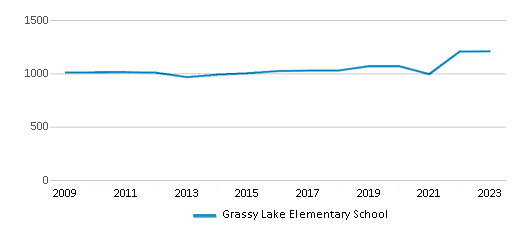
Gender %

Total Classroom Teachers
73 teachers
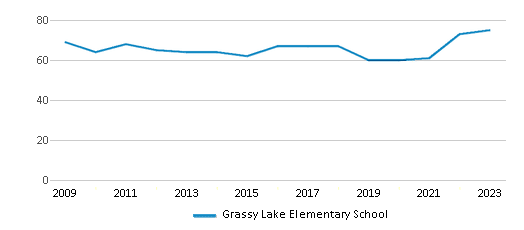
Students by Grade

School Rankings
Grassy Lake Elementary School ranks within the top 30% of all 3,704 schools in Florida (based off of combined math and reading proficiency testing data).
The diversity score of Grassy Lake Elementary School is 0.67, which is less than the diversity score at state average of 0.70. The school's diversity has stayed relatively flat over five school years.
Overall Testing Rank
#1031 out of 3704 schools
(Top 30%)
(Top 30%)
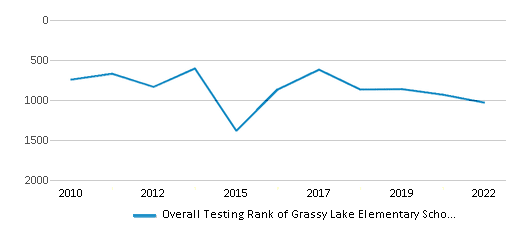
Math Test Scores (% Proficient)
60%
52%
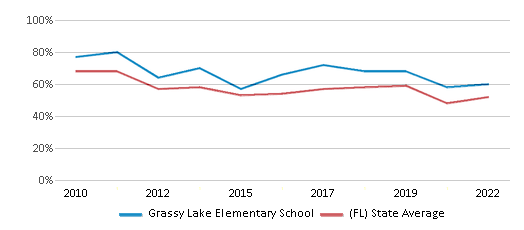
Reading/Language Arts Test Scores (% Proficient)
64%
52%

Science Test Scores (% Proficient)
49%
52%
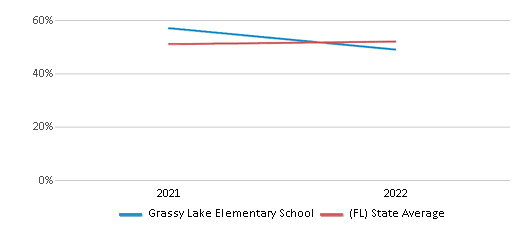
Student : Teacher Ratio
18:1
17:1
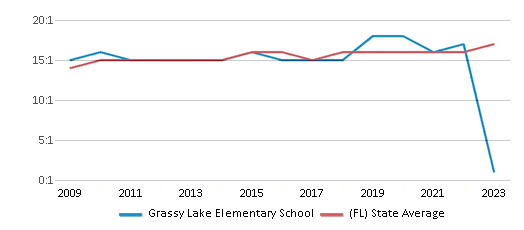
American Indian
n/a
n/a
Asian
5%
3%
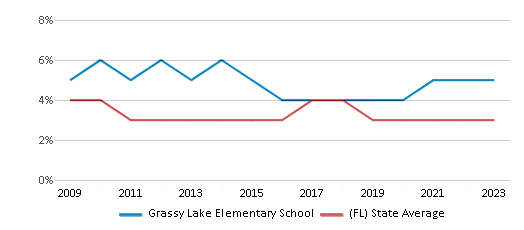
Hispanic
32%
37%
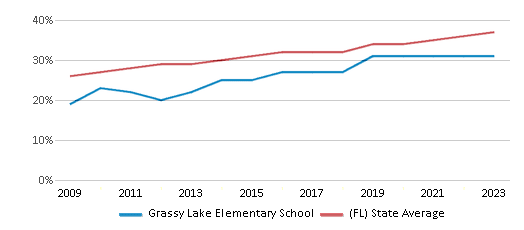
Black
11%
21%
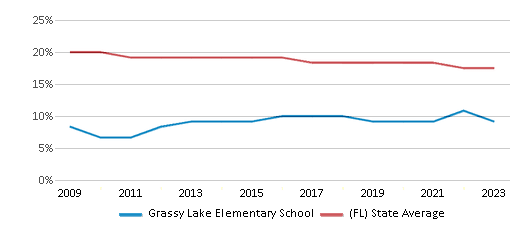
White
47%
35%
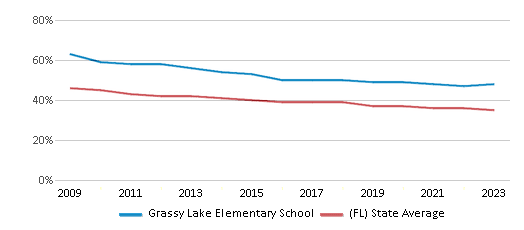
Hawaiian
n/a
n/a
Two or more races
5%
4%
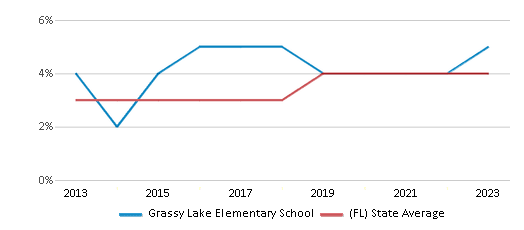
All Ethnic Groups
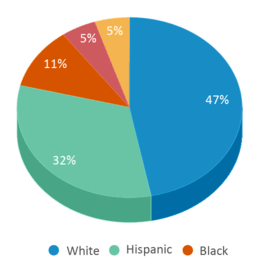
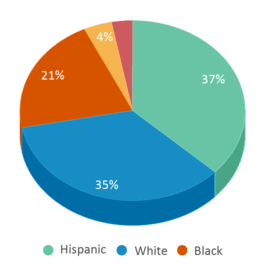
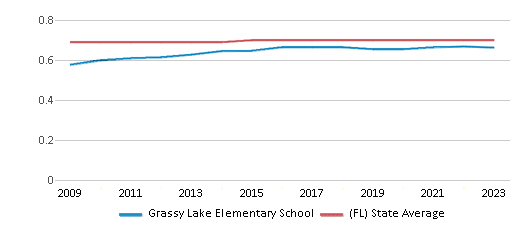
Participates in the National School Lunch Program (NSLP)
Yes
Eligible for Free Lunch
23%
47%
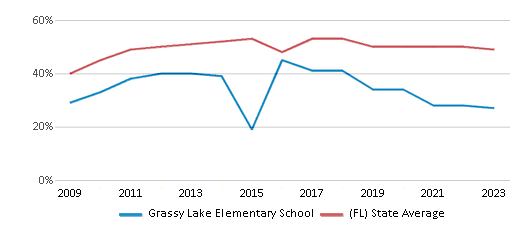
Eligible for Reduced Lunch
2%
4%
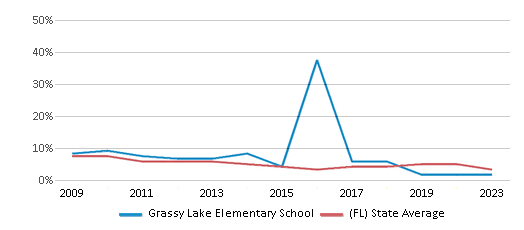
School Statewide Testing
School District Name
Source: National Center for Education Statistics (NCES), FL Dept. of Education
Profile last updated: 02/09/2025
Frequently Asked Questions
What is Grassy Lake Elementary School's ranking?
Grassy Lake Elementary School is ranked #1031 out of 3,704 schools, which ranks it among the top 30% of public schools in Florida.
What schools are Grassy Lake Elementary School often compared to?
Grassy Lake Elementary Schoolis often viewed alongside schools like Lost Lake Elementary School, Cypress Ridge Elementary School by visitors of our site.
What percent of students have achieved state testing proficiency in math and reading?
60% of students have achieved math proficiency (compared to the 52% FL state average), while 64% of students have achieved reading proficiency (compared to the 52% FL state average).
How many students attend Grassy Lake Elementary School?
1,335 students attend Grassy Lake Elementary School.
What is the racial composition of the student body?
47% of Grassy Lake Elementary School students are White, 32% of students are Hispanic, 11% of students are Black, 5% of students are Asian, and 5% of students are Two or more races.
What is the student:teacher ratio of Grassy Lake Elementary School?
Grassy Lake Elementary School has a student ration of 18:1, which is higher than the Florida state average of 17:1.
What grades does Grassy Lake Elementary School offer ?
Grassy Lake Elementary School offers enrollment in grades Prekindergarten-5
What school district is Grassy Lake Elementary School part of?
Grassy Lake Elementary School is part of Lake School District.
School Reviews
1 10/7/2020
We're new to the state this year and thus far, 3 of our teachers are great, the 4th one... a 3rd grade math teacher who has been dubbed a tough teacher is a bit of a bully. Not once, but multiple times has my child come home crying because his teacher was mean to him. As it sounds, this teacher picks favorites and doesn't like to actually help her students learn if they don't understand something. She retaliates In anger. My child is genuinely afraid of her and for the longest time refused to tell me what was wrong because he was scared she would find out and make matters even worse for them. This is the opposite of how a child should be taught. I will say this though, if it doesn't stop, I will bring it to every news station, every media platform, and to my lawyer. Some teachers shouldn't teach, and she is one of them. I am documenting everything and will be paying close attention.
Review Grassy Lake Elementary School. Reviews should be a few sentences in length. Please include any comments on:
- Quality of academic programs, teachers, and facilities
- Availability of music, art, sports and other extracurricular activities
Recent Articles

What Is A Charter School?
Explore the world of charter schools in this comprehensive guide. Learn about their history, how they operate, and the pros and cons of this educational innovation. Discover key facts about charter schools, including admission policies, demographics, and funding, as well as what to look for when considering a charter school for your child.

10 Reasons Why High School Sports Benefit Students
Discover the 10 compelling reasons why high school sports are beneficial for students. This comprehensive article explores how athletics enhance academic performance, foster personal growth, and develop crucial life skills. From improved fitness and time management to leadership development and community representation, learn why participating in high school sports can be a game-changer for students' overall success and well-being.

February 05, 2025
Understanding the U.S. Department of Education: Structure, Impact, and EvolutionWe explore how the Department of Education shapes American education, from its cabinet-level leadership to its impact on millions of students, written for general audiences seeking clarity on this vital institution.









